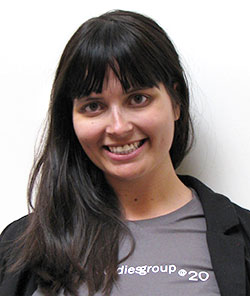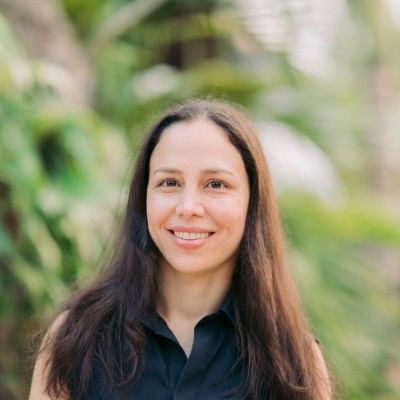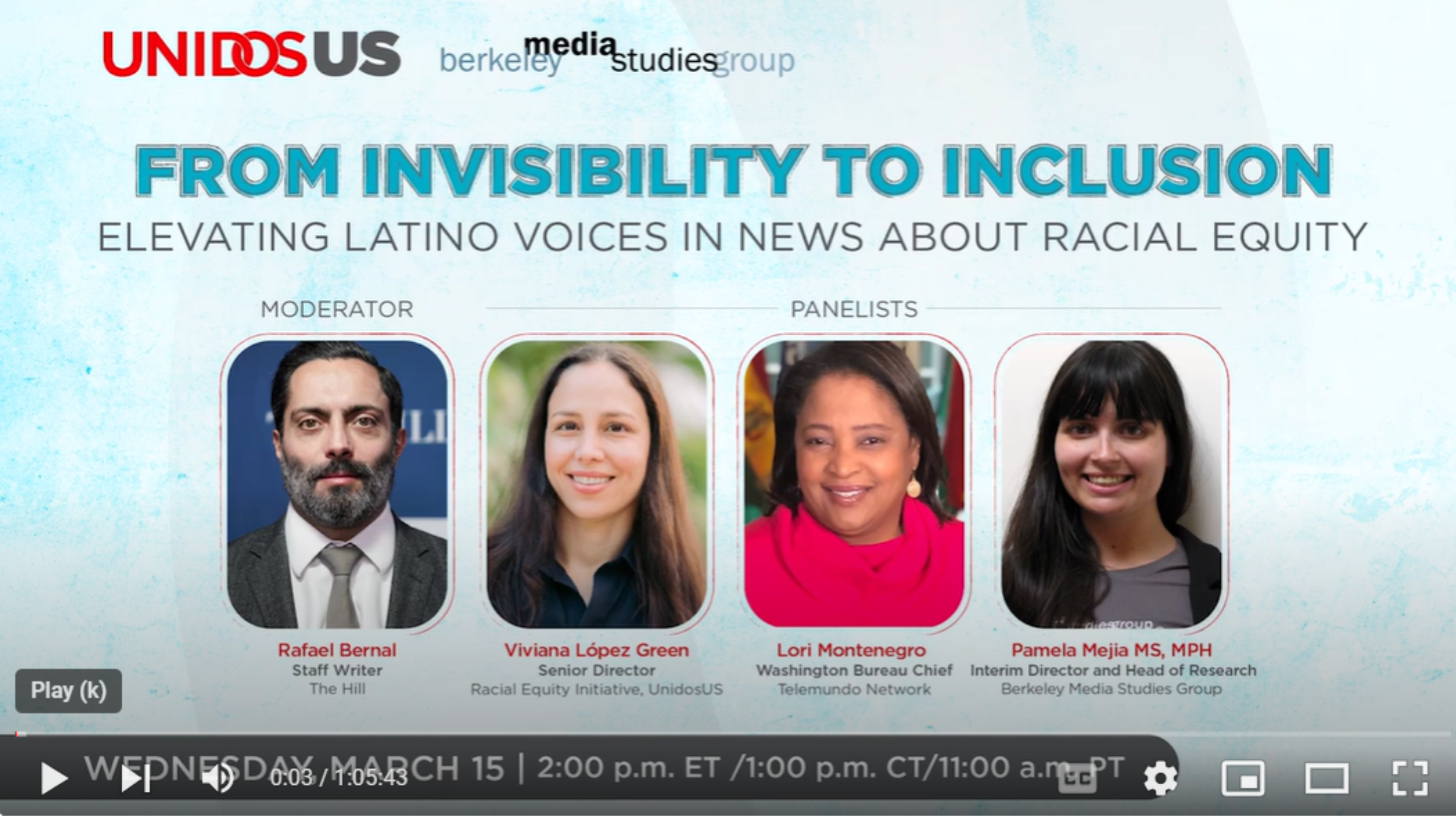Elevating Latino Voices, Experiences & Perspectives in News Coverage About Racial Justice
Program
Highlights

PHI’s Berkeley Media Studies Group collaborated with UnidosUS on a study that found Latino perspectives and voices are severely underrepresented in news coverage on racial equity and systemic racism.
5.6% of news about racism and racial equity referenced Latinos, according to BMSG's study
260+ participants attended a webinar to dive into the study findings
~1.2K unique views of report on BMSG’s website 1-month after launch
7M potential impressions from tweets and Twitter Chat event
-
Focus Areas
Healthy Communities -
Expertise
Media Advocacy & Communications
Latinos represent the largest ethnic minority in the United States, and Latino communities and leaders have been at the forefront of organizing around racial justice for decades. However, a 2023 study conducted by PHI’s Berkeley Media Studies Group (BMSG) in collaboration with UnidosUS suggests that Latino perspectives and voices are severely underrepresented in news coverage on racial equity and systemic racism.
The study, Elevating Latino Experiences and Voices in News about Racial Equity: Findings and Recommendations for More Complete Coverage, revealed that less than 6% of news about racism and racial equity referenced Latinos, who constitute nearly 20% of all Americans and over 40% of all people of color in the U.S.
National and local media outlets including NBC News, Mitú, Fox 41/11 Tri-Cities Yakima, and Latino-focused publications such as BELatina, Salud America!, along with Philanthropy News Digest, covered this issue and highlighted the study with recommendations for change.
Making people more aware of Latino experiences, perspectives and barriers is critical to ensuring that more U.S. policymakers, leaders, and the public have key information to support expanded access to opportunities for everyone—including Latino communities—and develop effective solutions rooted in equity.

When the news focuses only on problems without also exploring solutions, people—including policymakers—have a harder time envisioning next steps. Readers need to see the work that organizers and advocates are doing to improve their communities. Those are the kinds of stories that encourage action and instill hope.Pamela Mejia, MPH, MS
Associate Program Director & Director of Research, BMSG
BMSG worked closely with UnidosUS, the country’s largest Latino nonprofit civil rights and advocacy organization, to identify opportunities to expand and shape the narrative in news coverage about Latinos. When BMSG analyzed news articles about racial justice and racial inequities, they asked critical questions, such as:
- To what degree are Latinos present or absent?
- Are they mentioned directly or only indirectly as “communities of color”?
- Whose perspectives are quoted?
- How is coverage framed?
- Are Latinos discussed in relation to solutions—as agents of change—or is the focus mostly on problems they face?

When Latino experiences, contributions, and concerns are excluded from news coverage, policymakers and the public don’t have the facts needed to craft effective and inclusive solutions. Too often, our community is ‘out of sight-out of mind.' … We know change is possible.…Together, we can create a more inclusive narrative.Viviana Lopez Green
Senior Director for UnidosUS Racial Equity Initiative
Key recommendations for journalists, advocates, and others
- Expand and integrate authentic voices to diversify newsrooms: The diversity of newsroom staff is important and can help to ensure that news coverage is more accurate, relevant, and reflective of the communities they serve.
- Bridge the representation gap, making sure to uplift Latino individuals and organizations: This is important for promoting equity and inclusion in the media industry. When Latino individuals and organizations are represented in the media, it helps to counteract historical and ongoing underrepresentation and marginalization.
- Create strategic messages that explicitly frame inequities facing Latinos as racial equity issues, while incorporating a solution-oriented approach: Framing inequities facing Latinos as racial equity issues acknowledges the role of systemic racism and structural inequalities in perpetuating these inequities. This can help to create a shared understanding among audiences of the root causes of these issues and the need for systemic change.
Following the report’s release, BMSG and UnidosUS co-hosted a webinar with a panel discussion to release the findings and recommendations from the report. More than 260 participants attended the webinar, including journalists, advocates, health practitioners, organizers, and other key stakeholders. See the recording (above).

Here to say I’m not Latina but my Executive Director is. We’re a nonprofit in the Affordable Housing industry and her continual conversations with me about minority inclusion inspired me to register for this webinar that I would have not otherwise. So keep your voices strong—it’s commands for the others (like me) to hear.Webinar participant

[I’m a] Public-Information Officer for Centro De Salud Familiar La Few … I would appreciate having longer, more in-depth conversations about these subjects and networking with today’s panelists and everyone on this call. … Let’s keep this conversation going!Webinar participant

I feel that there needs to be a part 2 (or even part 3). This session feels to be significantly about validation, which is important. Next, practical conversations about narrative change, inclusivity, and engagement.Webinar participant
BMSG and UnidosUS also co-hosted a Tweet Chat with Salud America! resulting in over 463 tweets with the potential of 7 million impressions. In addition, there were approximately 1,200 unique views of the report on the BMSG website in the first month after its launch. The average time spent on the website was five minutes and 15 seconds, indicating that site visitors were reading and engaging with the report.
Read the full report
As a program of PHI, BMSG was able to tap into resources and support from their central communications department to support media relations efforts and help to garner news coverage and interest around the release of the report. Through PHI, BMSG was also able to reach and connect with an extensive network of public health professionals, resulting in increased visibility and engagement for this work.
Work With Us
You change the world. We do the rest. Explore fiscal sponsorship at PHI.
Support Us
Together, we can accelerate our response to public health’s most critical issues.
Find Employment
Begin your career at the Public Health Institute.

